Cycling north along the arrow-straight Avenue Charles de Gaulle out of Siem Reap, you quickly find yourself surrounded by tropical woodland. The shade from the banyans and silk-cotton trees provides a welcome respite from the relentless Cambodian sun, but the thick forest also prevents you from stealing a tantalizing glimpse of Angkor Archaeological Park’s ruined temples until you’re practically upon them.
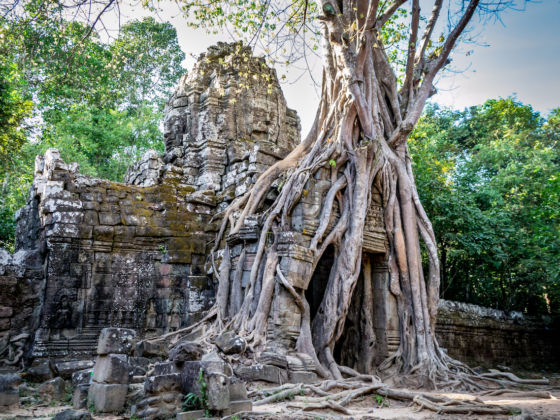

9 Stunning Temples You Need to See Near Siem Reap, Besides Angkor Wat
Not until you swing left onto the park’s main road and ride around a quarter of the perimeter of a 625-foot-wide moat are you finally rewarded with your first look at the grey sandstone outer walls of Angkor Wat, the world’s largest-ever religious structure, looming at the end of a giant raised causeway guarded by ancient lion statues. You’re dripping with sweat, but you hardly notice — this is one of the most beautiful and imposing buildings anywhere on Earth.
And even though it’s one of the world’s most famous historic attractions, most visitors only spend a day here, cycling or taking a tuk-tuk tour of Angkor Wat and the park’s two other big-hitters — Bayon and Ta Prohm. While undoubtedly spectacular, they’re also extremely popular. Expect to spend a lot of time stuck in a scrum of fellow tourists, especially if you’re trying to take pictures of the most Instagrammable spots.
But there is another option: There are dozens more incredible ruins in and around the Angkor park. Far from finding yourself stuck behind coach-loads of sightseers, you can visit most of these ancient temples and hardly see another person. Here are our nine favorite temples near Siem Reap that aren’t Angkor Wat.
Within Angkor Archaeological Park
All of the following ruins are part of the main park but beyond the reaches of the regular tourist route. At a push, you could reach all of them by bicycle over the course of a three-day visit (although expect to feel a little saddle-sore and sunburned at the end of it).
If you’d rather tour the sites in relative comfort, a tuk-tuk is your best bet. Drivers will happily take you wherever you wish for a ridiculously small fee; competition is so fierce that they typically charge just $15 for the so-called Small Loop that encompasses the main attractions. Be sure to tip generously — the cost of living in Cambodia is low, but $15 for a full day’s work simply isn’t enough to support the drivers and their families.
Neak Pean

Photo: Cocos.Bounty/Shutterstock
Fewer than four miles northeast of Angkor Thom’s towering, lichen-covered northern gate, Neak Pean is a tiny, beautiful ruined temple in the middle of a huge man-made lake. Built in the late 12th century, it was effectively the Khmer equivalent of a Roman bathhouse. Four connected pools representing the four elements — earth, fire, water, and wind — are located at the heart of the artificial island within the temple; it was believed that entering the waters would cure diseases.
This tranquil, uncrowded corner of the archaeological park is a fantastic spot for some quiet contemplation. Stroll around the edge of the pools, listening to the gentle tweeting of kingfishers and the occasional rippling of the water, and you’ll forget that you’re within a few hundred feet of thousands of other visitors.
However, the real star attraction here is the walk to the temple. Crossing the wooden walkway that leads across the Jayatataka Baray, the vast reservoir that surrounds the island, is an experience in itself.

Photo: Karen.T/Shutterstock
After the collapse of the Angkor kingdom, the baray fell into disrepair and completely dried out, allowing woodland to reclaim the former lakebed. But with the damage now fixed, it refills every wet season, flooding the roots and killing the trees. When the dry season causes the reservoir to retreat once more, the dying forest bursts back into life. Apparently healthy trees grow alongside twisted trunks and branches protruding from the lake, with the whole scene reflected in the opaque waters below.
Ta Keo
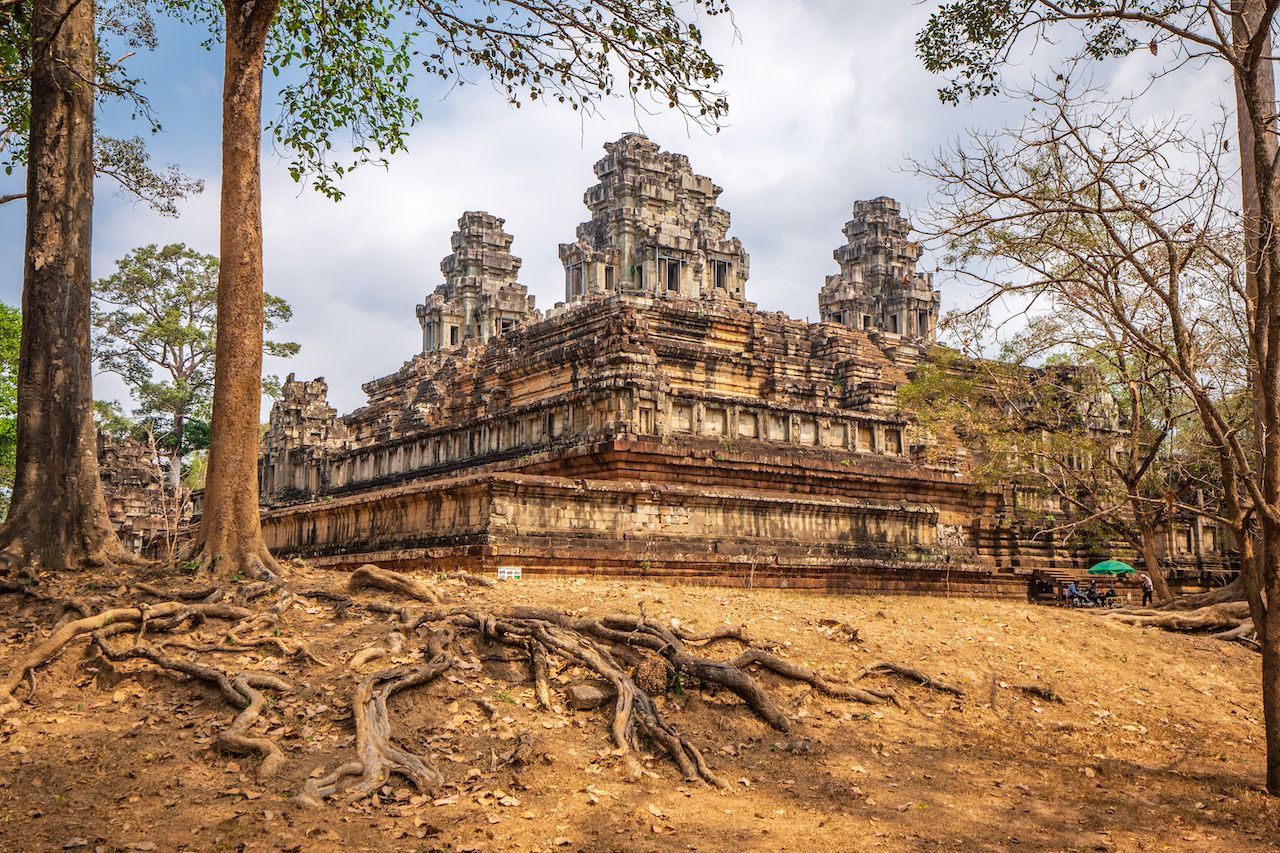
Photo: Arkady Zakharov/Shutterstock
Pyramids are more often associated with Ancient Egypt or the powerful Aztec and Mayan empires of Mexico and Central America, but the ancient rulers of Angkor built them, too.
One of the oldest examples — and possibly the first Khmer temple to be built entirely from the empire’s trademark sandstone — is Ta Keo. It lies just outside Angkor Thom’s eastern gate, one mile north of Ta Prohm, the overgrown “Tomb Raider temple” made famous by Angelina Jolie.

Photo: Diego Fiore/Shutterstock
This massive Hindu pyramid, built a century before Angkor Wat, was never finished. Inscriptions claim that the structure was hit by lightning, which was interpreted as a bad omen, prompting construction to be abandoned.
Finished or not, the terraced pyramid is an imposing sight, looming 65 feet above the jungle floor. Unlike at many other Angkor ruins, you can climb right to the top for vertiginous views of the verdant forest surrounds.
Preah Khan
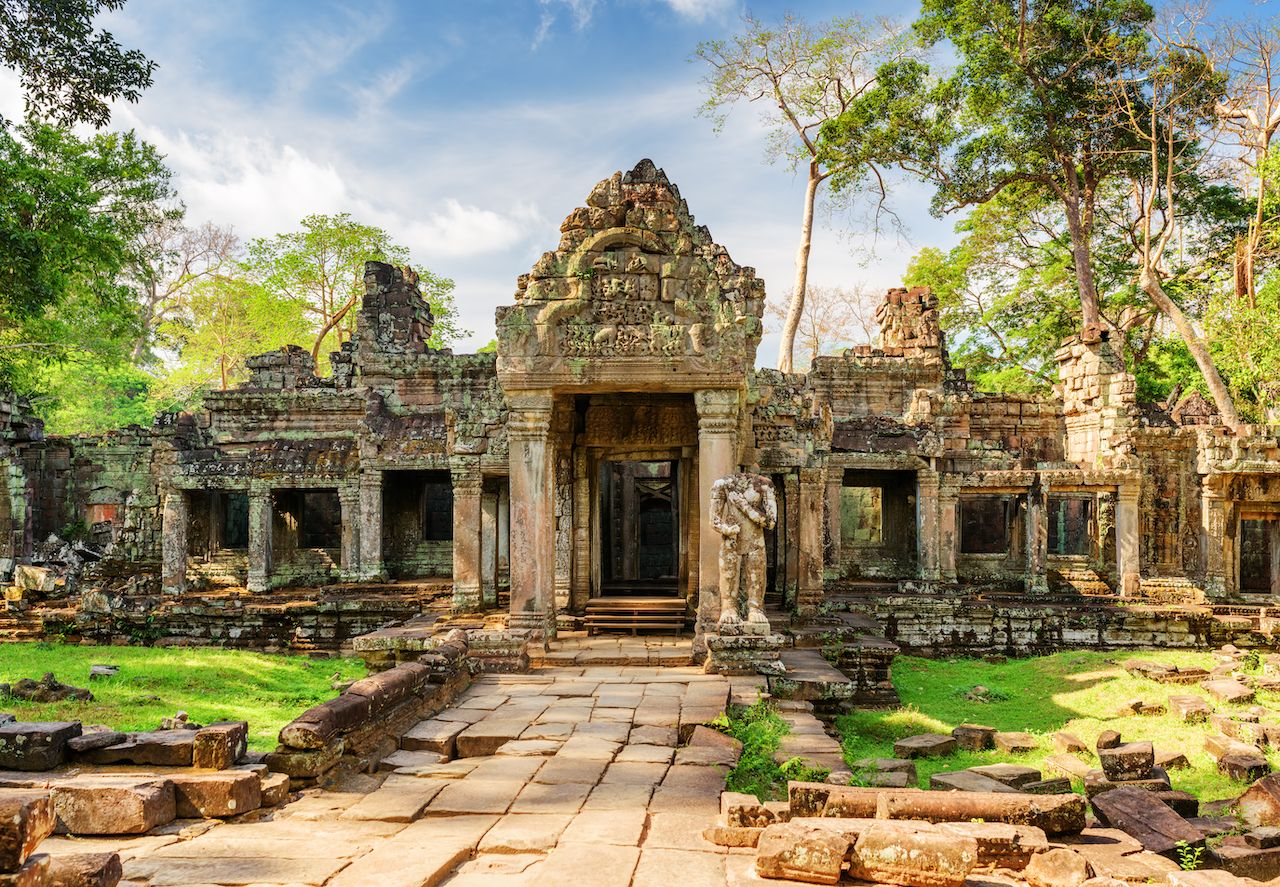
Photo: Efired/Shutterstock
On the western bank of the Jayatataka Baray, the temple of Preah Khan is a blend of Buddhist and Hindu themes, making it one of the most architecturally diverse structures in the whole park.
In reality, the term “temple” doesn’t do it justice. In its heyday, Preah Khan was also home to a Buddhist university attended and maintained by almost 100,000 officials and servants.
As with Ta Prohm, Preah Khan had been buried in jungle flora for centuries before it was “rediscovered” by French archaeologist Maurice Glaize in 1939. Along with the rest of Angkor, it had been abandoned by the Khmers in the 15th century; the capital moved to Phnom Penh to protect against regular military incursions from the neighboring king of Ayutthaya and better facilitate trade with China and Japan. On his discovery, Glaize remarked that Preah Khan had been “overrun with a particularly voracious vegetation and quite ruined.”
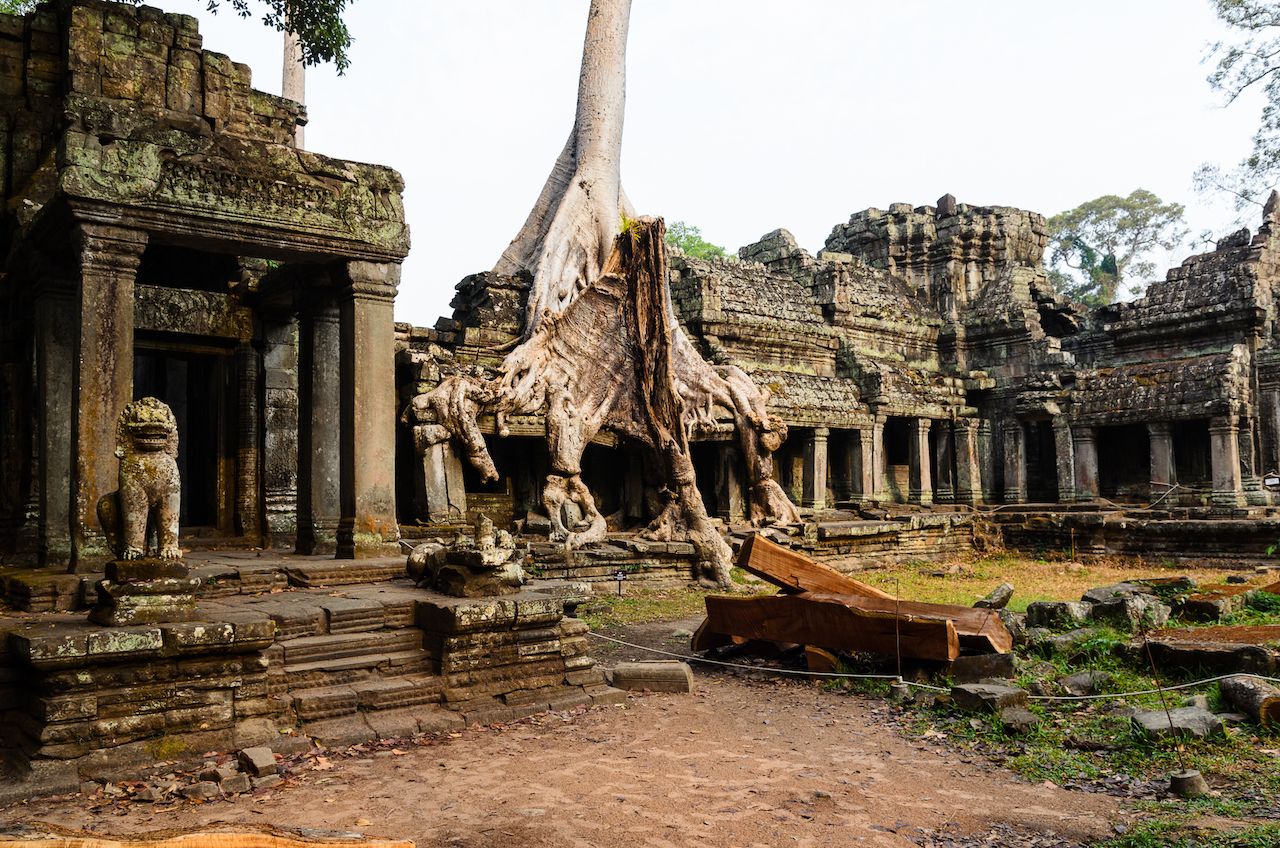
Photo: Sergey Peterman/Shutterstock
Restoration work has mostly beaten back the jungle’s advance, but what remains of the site is a sprawl of tumbledown sandstone walls, pillars, and archways, many of which are enveloped in the tangled roots of prodigious silk-cotton trees. Unlike Ta Prohm, it’s no problem to find a quiet spot to yourself, and you won’t spend your time being elbowed out the way by overeager photographers.
Baphuon

Photo: Anton_Ivanov/Shutterstock
Despite being right at the heart of Angkor Thom, Baphuon — the 3.5-square-mile, laterite-wall-enclosed space that was once the royal capital — attracts just a fraction of the visitors of nearby Bayon.
It’s difficult to work out why Baphuon isn’t more popular. Built in the temple-mountain style, its every surface is covered with intricate carvings. Squint at the western edge of the temple’s second tier and you should just be able to make out the remnants of a vast reclining Buddha, measuring 70 meters long and nine meters tall.
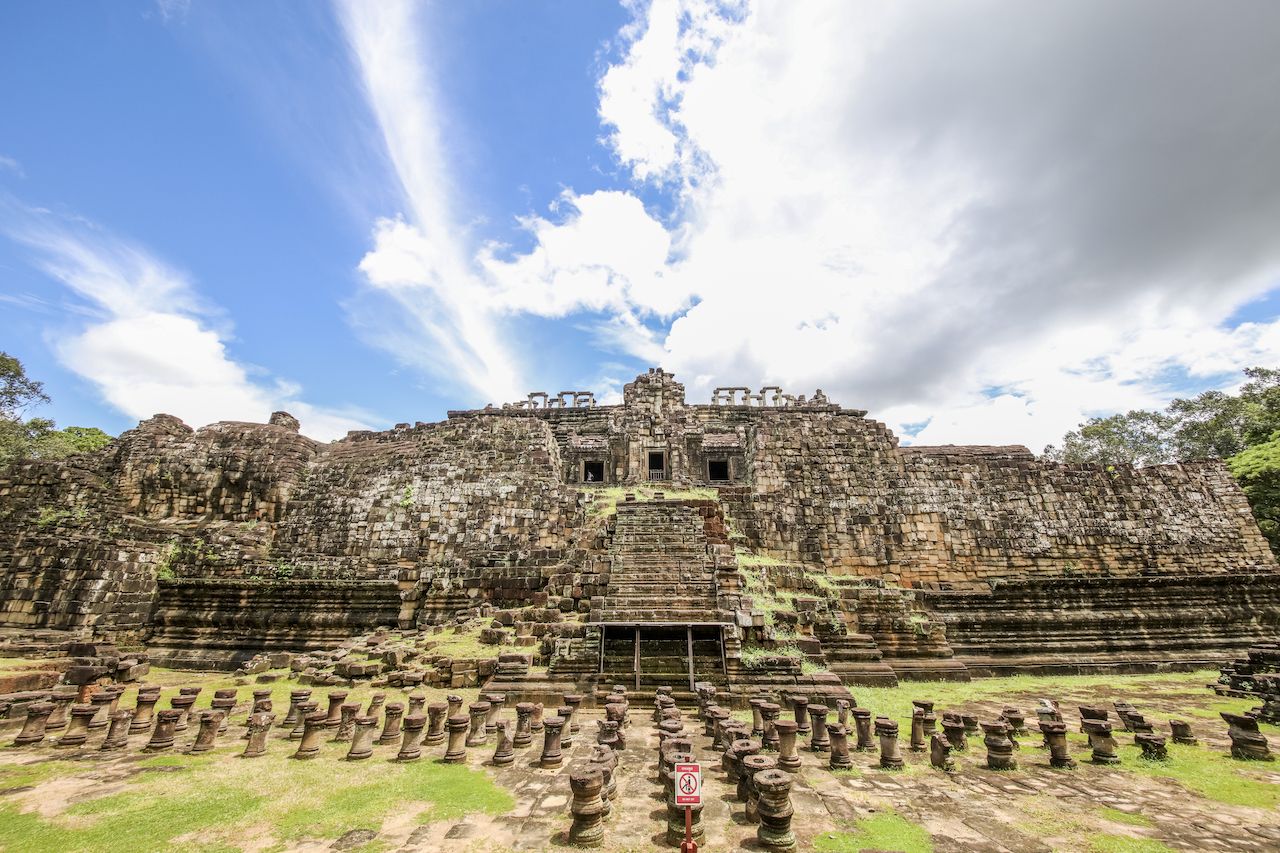
Photo: Kenny CMK/Shutterstock
It’s also worth mentioning Baphuon’s fascinating recent history. Such was its state of collapse that in the mid-20th century, the extreme decision was taken to dismantle the temple piece by piece, reinforce its central core, then rebuild it anew. But disaster befell the project in 1970 with the breakout of the Cambodian Civil War, during which the painstakingly assembled plans required to identify the temple’s 300,000 building blocks were destroyed by the Khmer Rouge.
Reconstruction efforts began again in 1996 and were only completed in 2011. At the time, project leader Pascal Royer said the mission was like tackling “a kind of jigsaw puzzle without the picture how to rebuild it”.
Banteay Kdei
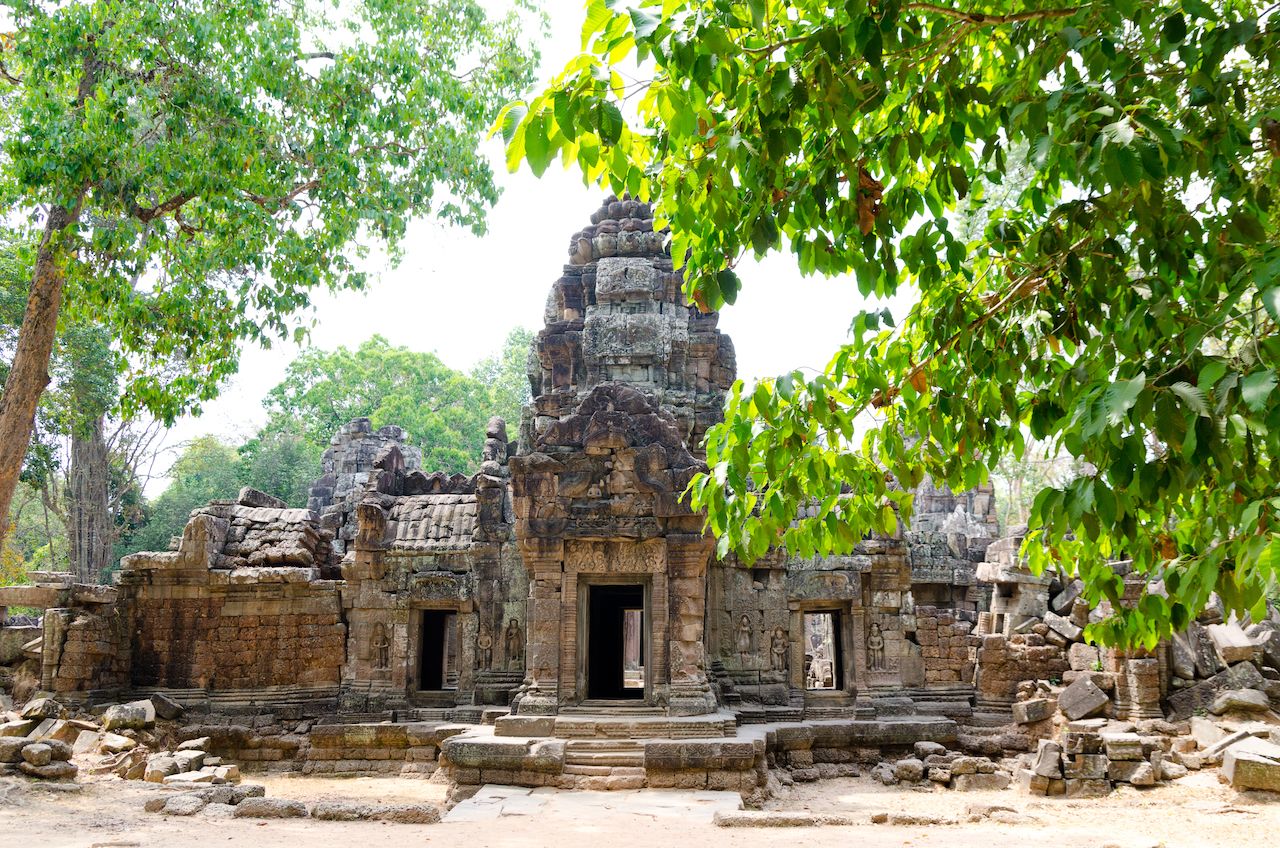
Photo: withGod/Shutterstock
One of the easternmost temples within the archaeological park, Banteay Kdei is peaceful, sparsely attended, and utterly confusing. It’s stylistically similar to Ta Prohm and Preah Khan, albeit less sprawling, but Banteay Kdei is proof that good things can come in small packages.
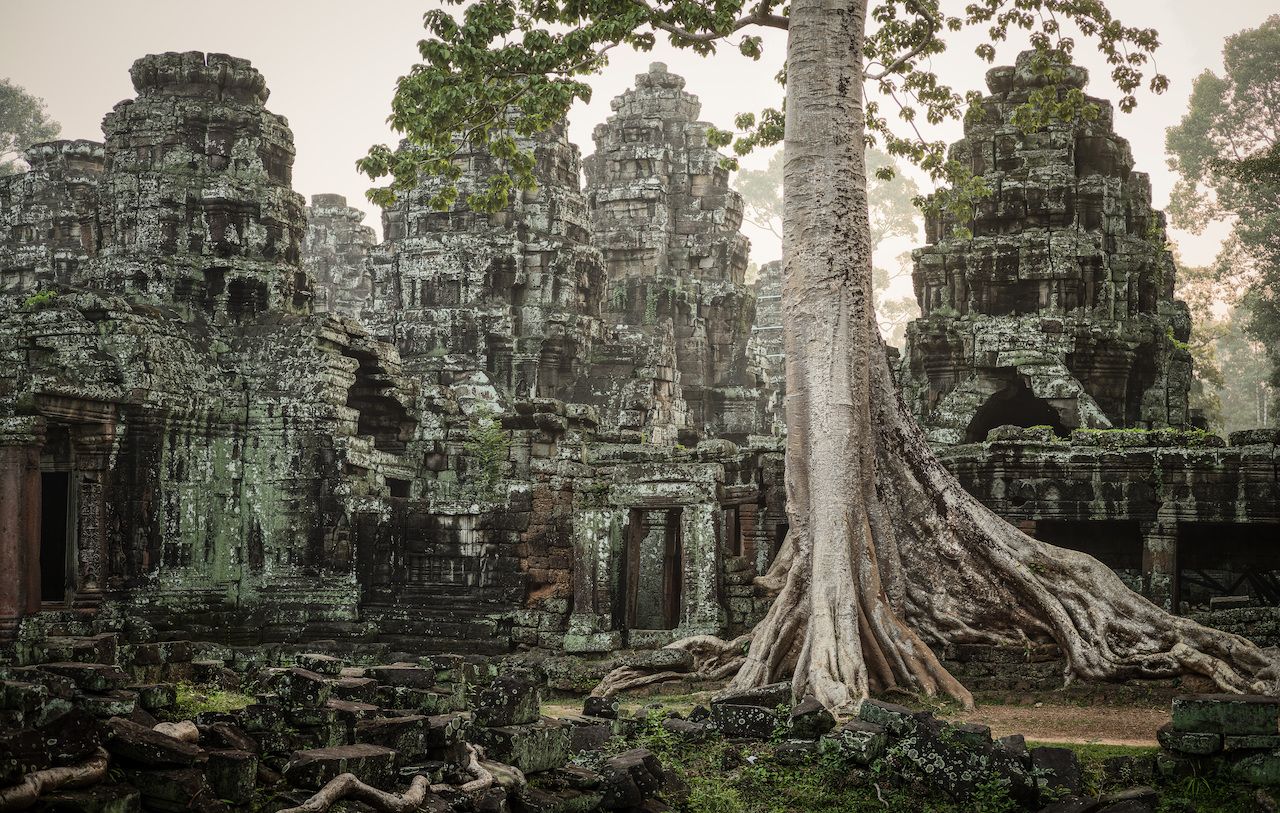
Photo: Janelle Lugge/Shutterstock
The Khmer name translates as “A Citadel of Chambers,” and it’s not hard to see why. The ruins comprise a warren of rooms; some are connected while others are blocked by rockfalls and interloping trees. Remarkably, this seemingly precarious structure — which is actually perfectly safe thanks to extensive renovation work — was still occupied by Buddhist monks as recently as the 1960s.
Ta Som
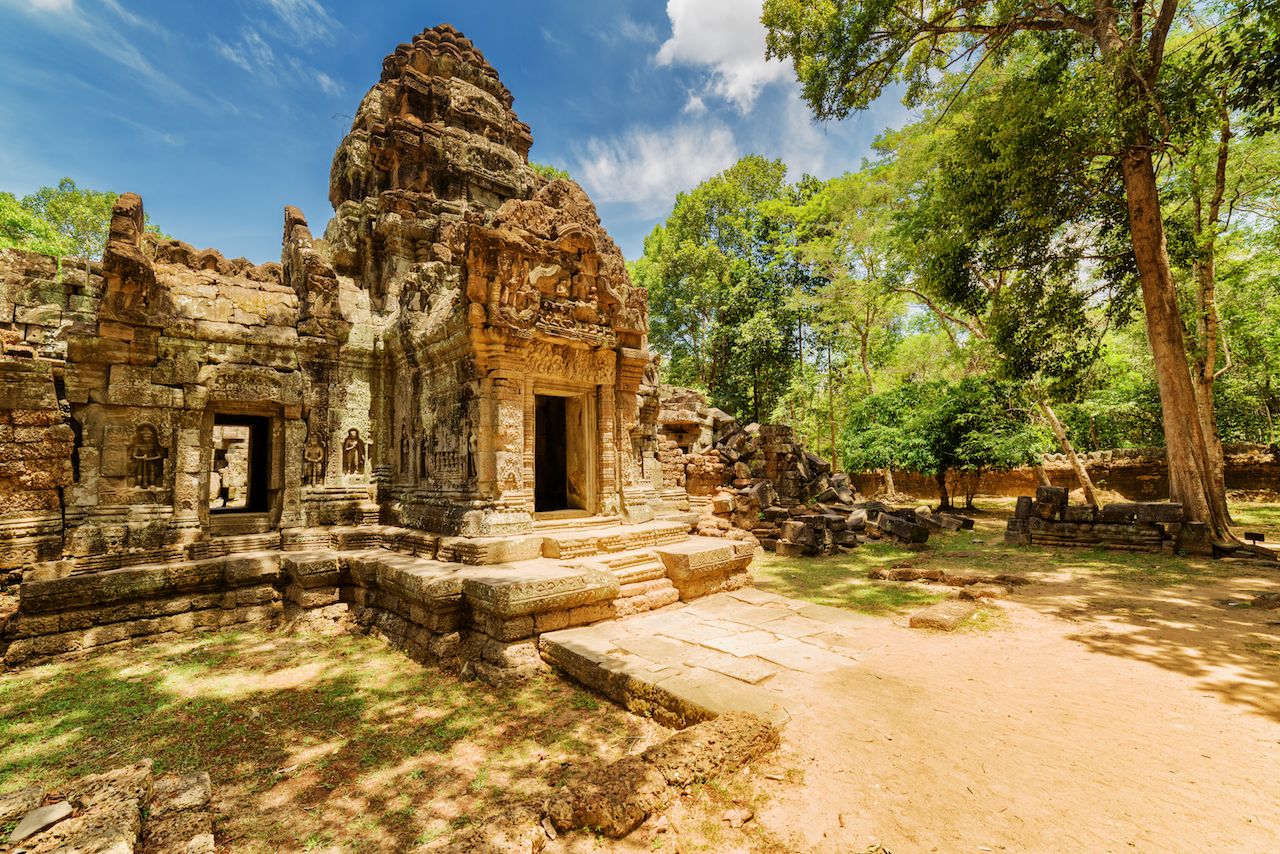
Photo: Efired/Shutterstock
Another of the ancient temples dotted along the shores of the Jayatataka Baray, Ta Som occupies the opposite shore to Preah Khan. A little more than five miles from the center of Angkor Thom, it’s far from the tourist hordes of the park’s main attractions.
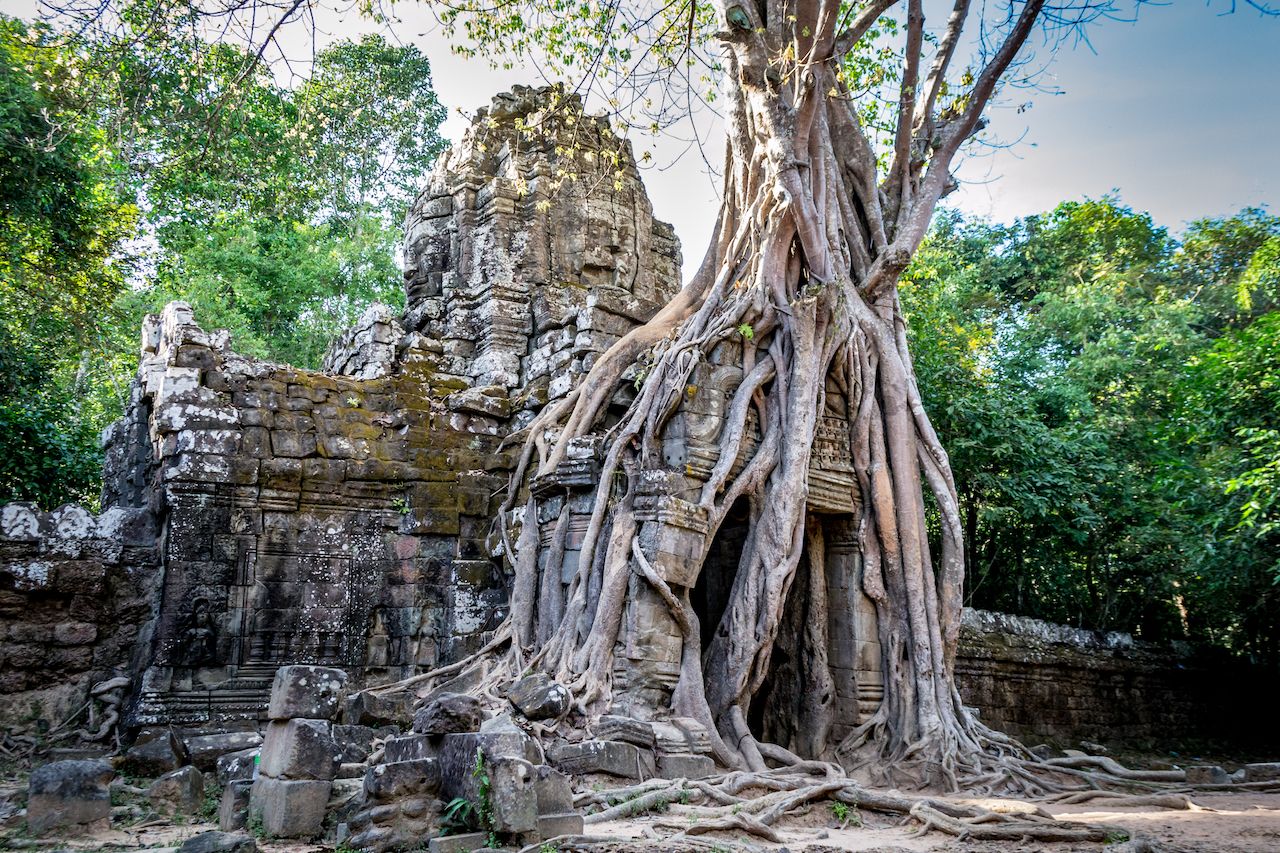
Photo: TurneroundDesigns/Shutterstock
Despite being among Angkor’s more diminutive ruins, Ta Som is home to one of the park’s most impressive sights. The eastern gopura (monumental entrance tower) has, down the centuries, become engulfed by an enormous — and appropriately named — strangler fig tree. No doubt the temple was beautiful in its heyday, but it’s hard to imagine that it looked any more impressive than in its current, gloriously dilapidated state.
Phnom Bakheng
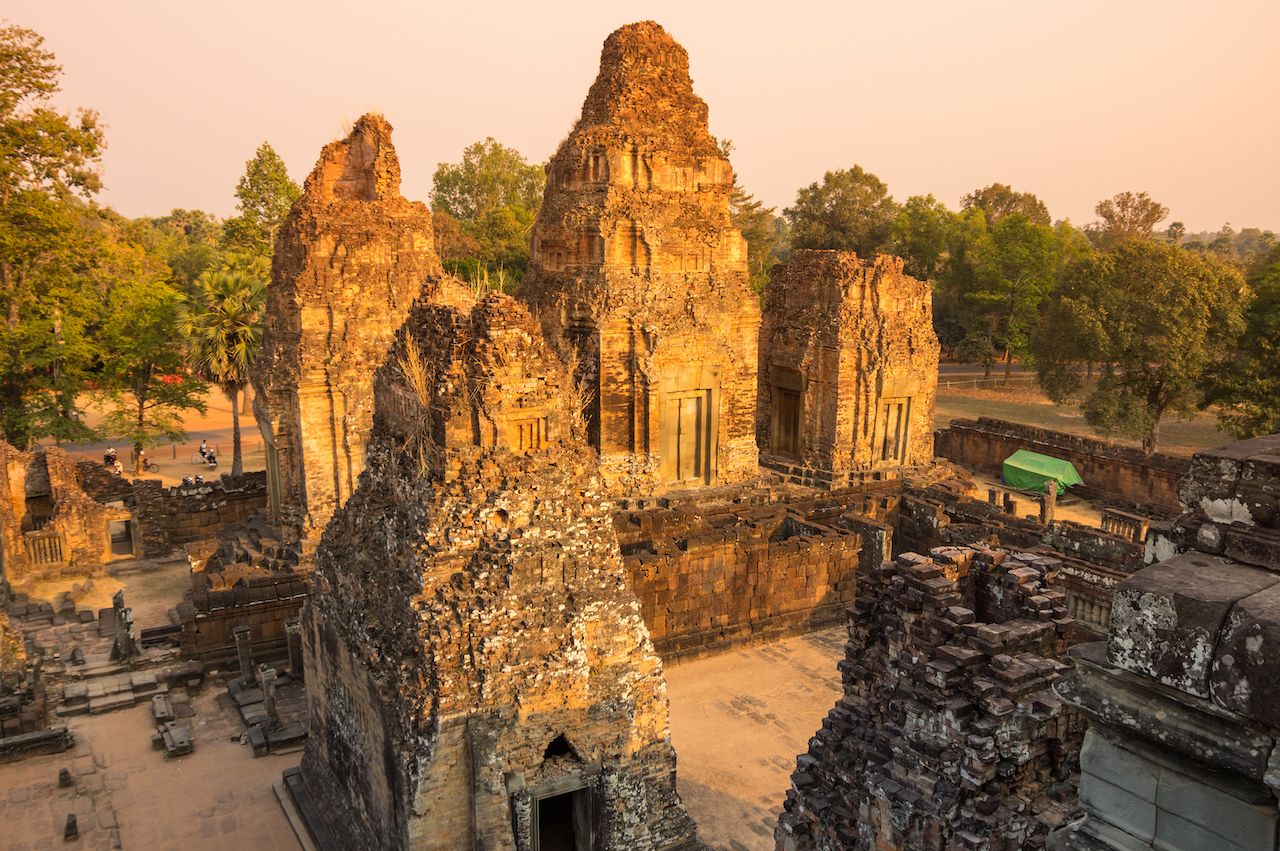
Photo: gumbao/Shutterstock
While a small but striking ruin in its own right, the hilltop temple of Bakheng is mostly worth visiting for the incredible views it offers of neighboring Angkor Wat.
Phnom Bakheng is reached by a long, steep path to the east of the temple, but the climb is well worth the effort. Once you’ve reached the summit, you’ll be able to enjoy perhaps the best view of Angkor Wat to be found anywhere in the park; you can make out all five of the temple’s main towers from here (which you can’t even do from the entrance of Angkor Wat itself).
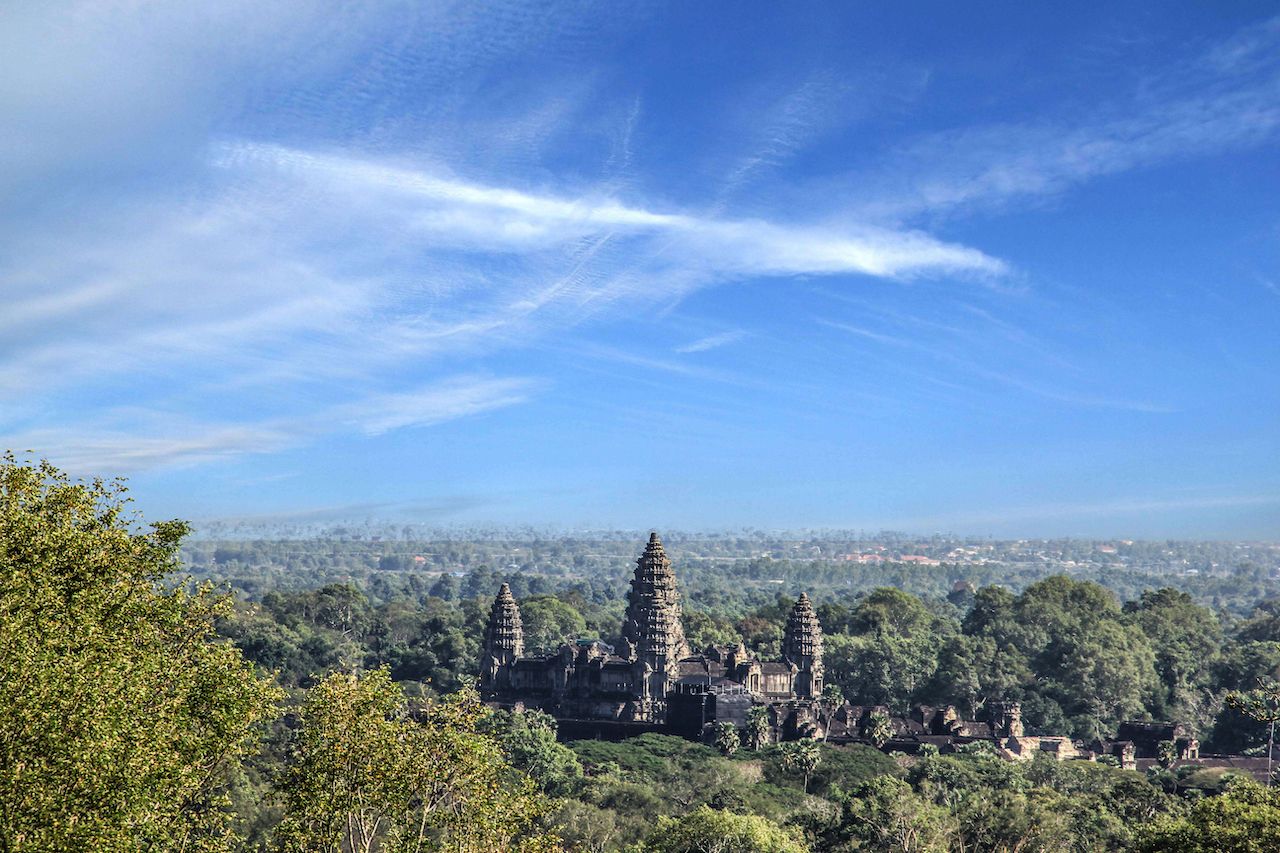
Photo: Chen Liji/Shutterstock
Despite the somewhat arduous trek to the top, Bakheng is more popular than any of the other ruins in this section, particularly at sunrise and sunset. It’s much quieter at midday, although the scorching noon sun won’t make the walk any easier.
Outside Siem Reap
Don’t expect to reach these two on a bicycle. The first is about an hour’s drive from Siem Reap, the second more than two hours. You’ll either need to hire a tuk-tuk or taxi — the latter will obviously be more comfortable but also more expensive — or pick up some wheels yourself. Rent a car and you can see both in a relatively sedate two days or an intense single day if you’re pushed for time.
Prasat Banteay Srei

Photo: Noppasin Wongchum/Shutterstock
Petite, pretty, and blissfully quiet, Prasat Banteay Srei is located about an hour’s drive north of Siem Reap and 20 miles from the archaeological park. It might not be part of the main park, but your standard Angkor ticket will still get you in (in fact, you can’t access the site without one).
Set within an immense forest, the pink sandstone temple has a fairytale feel, aided by its diminutive stature, superb state of preservation, and intricate carvings. Architecturally, it looks more akin to an ancient Indian temple than any of the other Angkor ruins. A series of small pools ring the inner walls, beautifully reflecting the three ornately carved towers at the temple’s center.
Koh Ker
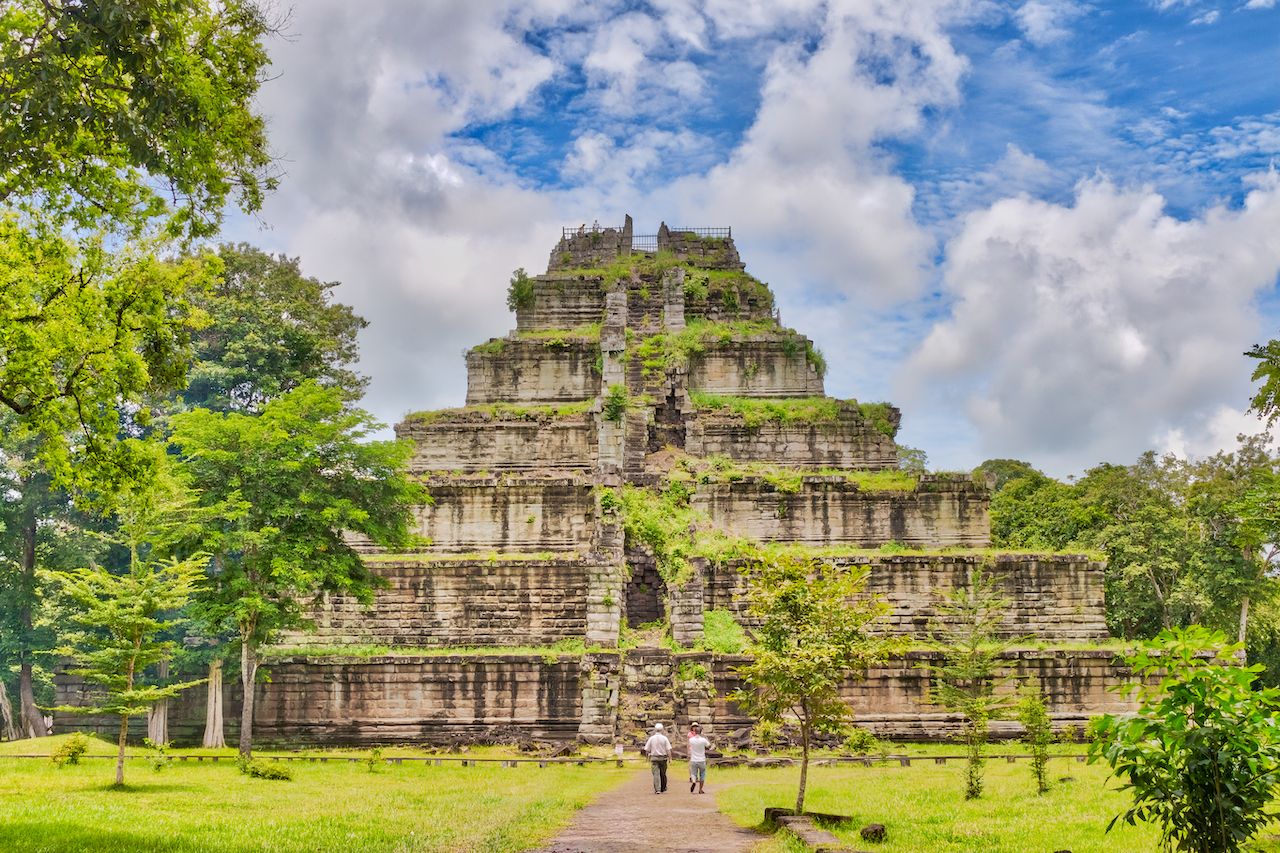
Photo: Visualize Creative/Shutterstock
Given its 70-mile distance from the Angkor park, you’ll need to pay a separate $10 admission to Koh Ker, but it’s worth the money. More than just a temple ruin, it’s actually a whole ancient city that served as the capital of the Khmer Empire and housed more than 10,000 citizens, hundreds of years before the construction of Angkor Thom.
There are 184 individual monuments within the city limits, although only a dozen are open to the public; the surrounding areas are yet to be cleared of landmines, a stark reminder of the country’s recent turbulent history.
The star attraction here is Prang, a mammoth, seven-tiered pyramid that looms out of the thick surrounding greenery. While the original steps have eroded, you can scale the temple via a recently constructed wooden staircase for views of jungle stretching to the horizon. The complete absence of crowds heightens an already serene experience.